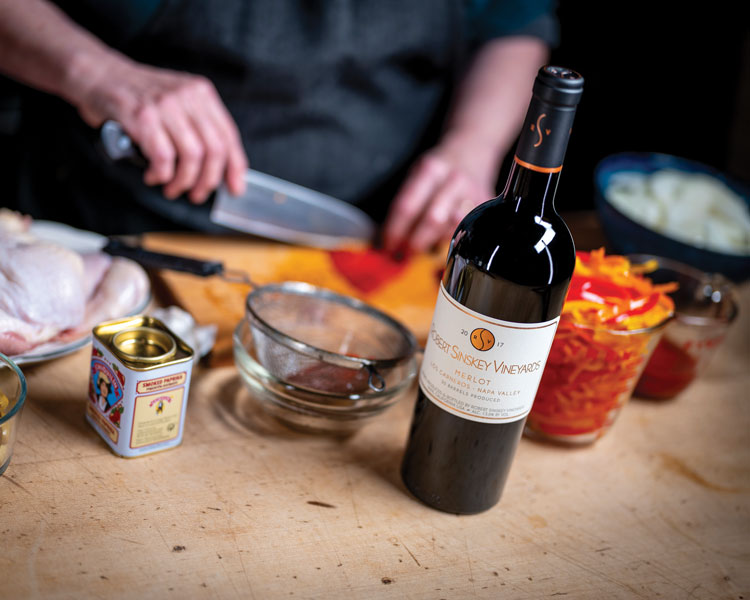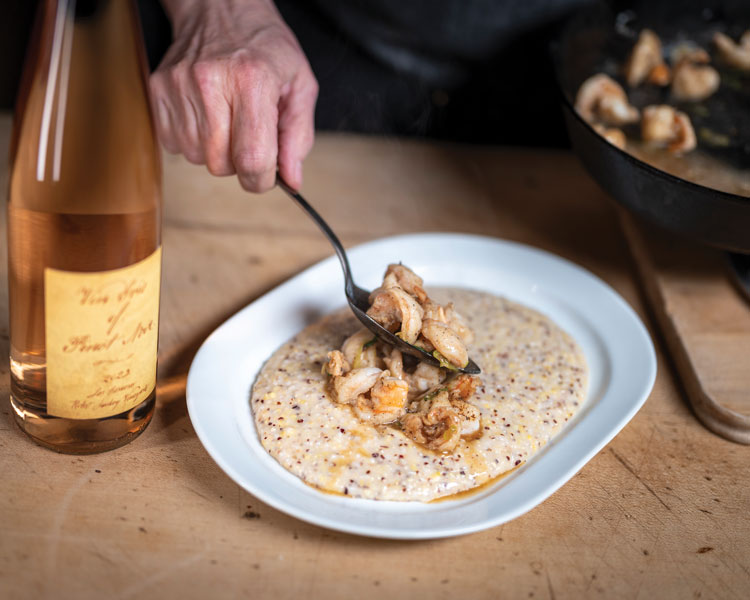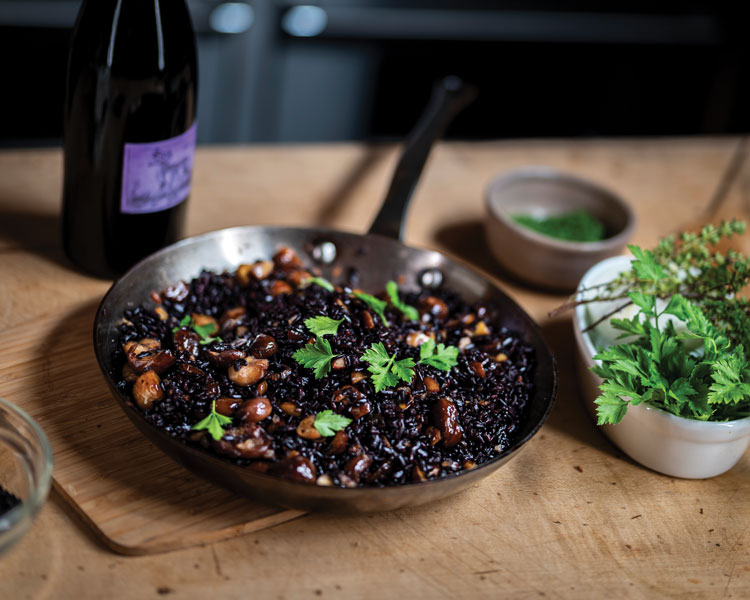A New, Old Tradition
Long ago and far away, I found myself in a tiny Winstub, oblivious that the course of my life was forever to be altered. I was working at a three-star Michelin Restaurant in Strasbourg and my chef had directed me to a fire-warmed, snug space to experience a regional dish called Tart Flambé. The giant circle of a Flambé landed on the table with bubbling crème fraîche, lightly caramelized on the apex of each bubble. The aroma of smoked ham and onions wafted up from the table. The crust, was thin and crisp with its entirety kissed by the smoke from the wood oven. What looked heavy proved to be light as a feather after the first bite. The amount of crème fraîche, ham and onions was just enough for the thin crisp crust. Anything more and it would have been too much. After this experience, I held firm to the belief that the thin cracker crust of a Tart Flambé should only be topped with crème fraîche, onions and ham and consumed with a bright, aromatic, unoaked white wine. That is the way I enjoyed it when I lived in Alsace and that’s the way it imprinted in my brain. A good Tart Flambé was a luxury. Ironically, in a region that considered Tart Flambé a dish of regional pride, it was awash with many badly constructed versions. This little Winstub in Strasbourg set the bar high and will forever be the Tart Flambé standard bearer.
Some 20 years later, I returned to Alsace on a writing assignment and discovered much had changed on the Tart Flambé scene. No longer were they just topped with ham, onions and cheese. They had become loaded with a whole plethora of pizza-like toppings. While they were tasty, the thin crust couldn’t hold up to the weight of these nouveau versions. Time and time again, the crust would fold like soggy cardboard.
Times changed in the wine-making arena too. Pinot Noir, once relegated to one or two barrels tucked into a corner of the cellar, had found the spotlight. Winemakers became serious about adding a red to their quiver and Pinot Noir was the chosen candidate. Alsatian Pinot Noirs are mostly on the lighter side with a bright, fruity character. Some, from select sites, can be more broody with a darker complexion but are still bright and fresh. Perhaps the climate has shifted in Pinot Noir’s favor and/or winemakers have mastered growing and making wine from this fickle grape, but they are much more serious than I remembered them to be.
A traditional Tart Flambé can work with Pinot Noir but let’s not set limitations. An Alsatian friend once mentioned a Tart Flambé “of the forest” that his family would make using foraged mushrooms and a good grating of Comté cheese. He also affirmed what I observed in the Winstub that the key to success was to not overload the crust.
There you have it; a memory as the perfect match for this release of the Vandal Vineyard Pinot Noir. Dark and broody with its hints of forest floor, sour cherry and plum fruit, if there were ever a wine that went beautifully with wild mushrooms and a shower of Comté, this was it. I realize that by going forward while looking back, I had created my own new tradition for Tart Flambé and Pinot Noir.
Until the Next Wine…
Maria
EAT: Wild Mushroom and Comté Cheese Tart Flambé




